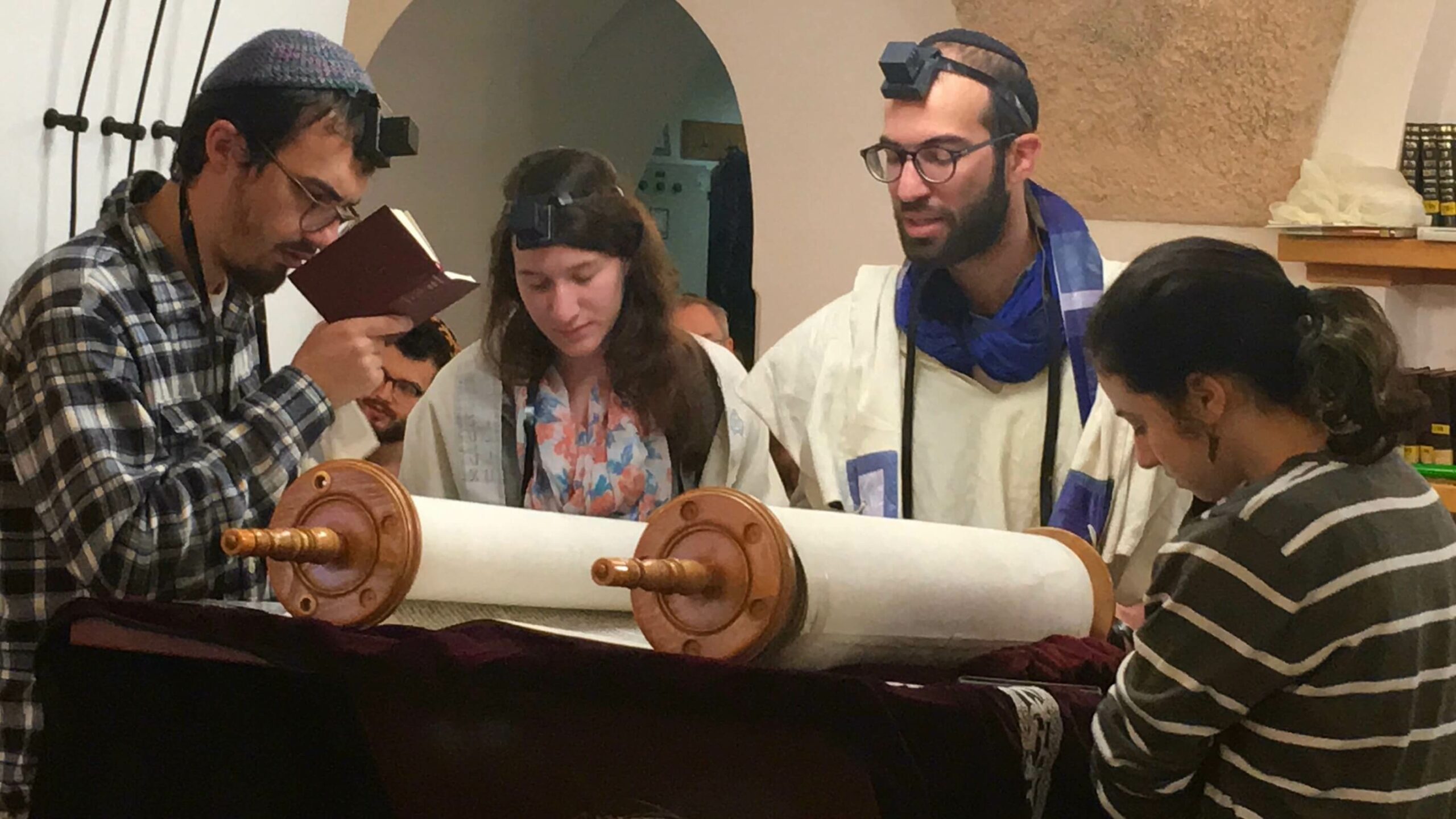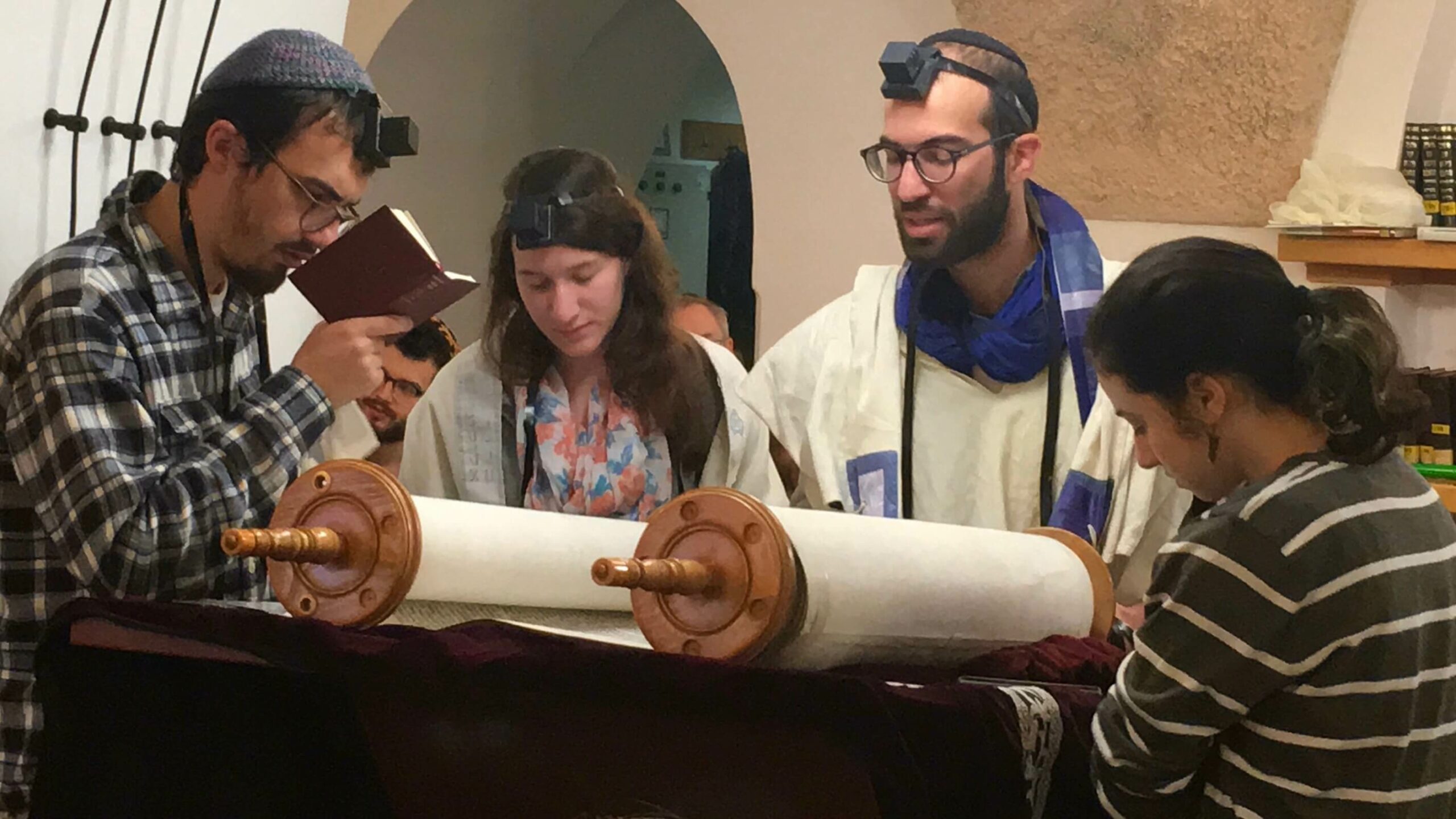

TORAH SPARKS (print friendly version)
Shevi’i shel Pesach April 26, 2019 | 21 Nisan 5779
Torah (Exodus 13:17-15:26): Etz Hayim p. 399; Hertz p. 265
Maftir (Numbers 28:19-25) Etz Hayim p. 932; Hertz p. 697
Haftarah (2 Samuel 22:1-51): Etz Hayim p. 1310; Hertz p. 1017
D’var Torah: The Parashah Eclipse
Rabbi Daniel Goldfarb, who served as CY Director from 2000-2013, wrote the following for Torah Sparks in 2016, and it applies this year as well.
This Shabbat, synagogues in Israel and those in the Diaspora will part company, as far as the Torah readings are concerned. This is because in Israel Pesach ends on Friday, and thus on Shabbat we will read Aharei Mot from the regular Torah cycle. But in the Diaspora Shabbat is Yom Tov Sheni shel Galuyot, the second day of Shevi’i shel Pesach, so the Torah reading there will be for Hag (Festival), Deut. 14:22-16:17. The regular readings will resume with Aharei Mot next week, when in Israel, we’ll already be reading Parashat Kedoshim. Indeed Israel will continue to be a week ahead until all meet again on August 3, when Diaspora synagogues will catch up by combining two sidras (readings), Matot and Masei.
Gaps in the Torah readings are fairly common, in fact in most years, but they are usually shorter, namely six weeks. This happens in two cases. The first is when Shavuot falls on a Friday, which means that the next day (Shabbat) is a regular day in Israel but still Yom Tov in the Diaspora, and we rejoin six weeks later when Hukkat and Balak are combined in the Diaspora. The goal here is to enable all to read Parashat Ve’etchanan right after Tisha b’Av, as prescribed by Maimonides.
The other six-week gap comes in a regular, twelve-month, year when the 8th day of Pesach (in the Diaspora only, of course) falls on Shabbat, and we come together when Behar and Behukotai are combined in the Diaspora, so that all will be reading Bamidbar before Shavuot. This is based on a ruling in the Talmud (Megilla 31b) that we read the Curses of Behukotai (Lev. 26) before Shavuot and those of Ki Tavo (Deut. 28) before Rosh Hashana, so we enter the New Year “with the bad things behind us.” (Shavuot is also considered a New Year for this purpose, Mishna Rosh Hashana 1:2). Tosafot said we should add another Shabbat as a “buffer” between the portions with the Curses and those holidays, and that has been adopted, which is why Bamidbar generally precedes Shavuot and Nitzavim (or Nitzavim/Vayelech) precedes Rosh Hashana.
But in a leap year (13 months, with a second month of Adar) in which Pesach ends on Friday in Israel and on Shabbat elsewhere, as the current year, the gap runs 15 weeks, right up till a week before Shabbat Devarim before 9th Av. This year is notable also because in Israel at least, it has 53 Shabbats available for regular Torah readings, the most that can happen and so there are no combined readings here this year (the 54th parashah, VeZot HaBracha, is read on Simchat Torah, never as a regular Shabbat reading). The extra Shabbats from the “leap” month mean that Naso is read in Israel before Shavuot, while the Diaspora that Shabbat reads Bamidbar, as Tosafot prescribed. It is not clear why the Diaspora does not rejoin the Israeli cycle three weeks earlier by combining Hukkat and Balak, as happens in non-leap years with Pesach over on Friday (or Shabbat), but such has been the custom for centuries.
PLEASE NOTE – Torah Sparks will follow the Diaspora schedule; next week (Shabbat, May 3-4) will be Aharei Mot.
Shevi’i shel Pesach Self-Study
Vered Hollander-Goldfarb, Conservative Yeshiva Faculty
On the Seventh Day of Pesach, a week into freedom, we read about an event that, according to tradition, took place on that day: Crossing the Red Sea. Our reading (Exodus 13:17-15:26) starts the story of the Israelites at the point that they had left Egypt. On the 8th day we read about the holidays.
- Escaping from Egypt into the desert, the Israelites need guidance. They receive it as God goes before them in a cloud during the day and a pillar of fire at night. Other than the practical aspect of showing the physical route, what do you think that the cloud and fire do for them?
- Pharaoh and the Egyptians were very eager to get rid of the Israelites on the night of the Exodus (as we read last week), yet now they decided to give chase and return them to slavery. How do you explain such a change of heart (and short memory)?
- The crossing of the Red Sea and the elimination of the great Egyptian army might elicit reactions not only from the Israelites that were saved. The Midrash tells us that the angels wished to praise God as well, but were rebuked: “My creations are drowning in the sea, and you are saying an [exulting] song?” (TB Megillah 10b). What conflict in the situation is the Midrash pointing out? *Can you think of other places were the Midrash brings a similar dilemma?
- On the 8th day of Pesach we read from Deut. 15:19-16:17. The first holiday mentioned in this section is Pesach (16:1-8). We are given the reason for the Pesach as ‘for you left the Land of Egypt in a hurry, so you shall remember the day of exiting Egypt all the days of your life.’ What do you think is the value in leaving in a hurried manner?
- Unlike the Pesach of Egypt, here the Torah demands that everyone comes to ‘the place that God has chosen’ for the Pesach sacrifice. What might be the reason for the different modes of observance given in Shemot (which we read last week) and here, in Devarim, as spoken by Moshe to the people before entering the land?
D’var Haftarah: Getting Creative
Rabbi Mordechai Silverstein, Conservative Yeshiva Faculty
The seventh day of Pesach is known as the day we celebrate the splitting of the sea and the accompanying miraculous redemption of the Children of Israel from Pharaoh’s marauding army. We celebrate by reading the Torah’s most famous song – the Song of the Sea, a paean to God for redeeming us through this miraculous event. In the accompanying haftarah, we read David’s triumphant song of thanksgiving and praise for God’s granting him victory over his enemies. David’s song is as colorful in its figurative language as is the Song of the Sea. It, too, pictures God as a warrior conquering His foes: “He (God) mounted a cherub and flew. He soared on the wings of the wind… He let loose arrows and routed them, lighting and struck them with panic.” (verses 11; 15)
These images capture the sense of thankfulness the author felt in overcoming great odds and achieving greatness with God’s help. If it is anything that the rabbinic sages were known for, it was their careful and sensitive reading of Tanakh (the Jewish Bible) and their ability to catch when one text was alluding to another. In the following midrash, the sages see echoes of the language of the Exodus in David’s poem and, in consequence, use David’s words in a playful way to express the interaction between God and Pharaoh at the splitting of the sea: “Rabbi Berechiah said in the name of Rabbi Eleazar: ‘The Holy One, blessed be He, now riding upon a cherub, as is said: ‘He rode upon a cherub’, asked Pharaoh: “O wicked one, perhaps you have a cherub?” The Holy One, blessed be He, now flying, as is said: ‘He… flew’, asked Pharaoh: “O wicked one, perhaps you can fly?” The Holy One, blessed be He, now moving from wing to wing of the wind, as is said: ‘He soared on the wings of the wind’, asked Pharaoh: ‘O wicked one, perchance thou canst do this?’ (adapted from Midrash Tehillim 18:14 Buber ed. p. 143-4)
In this amusing dialogue between God and Pharaoh, God shows his one-upmanship over Pharaoh. What is the point? Aside from being able to use David’s words in a creatively anachronistic and anthropomorphic way which may turn the heads of the overly rational amongst us, this dialogue is a poetic way to express the triumph of good over evil, to express that the despot will ultimately not triumph. God will not let Pharoah win!
The sages were both careful readers, but also creative readers, both rational (at times) but also poetic. We can take a valuable lesson from them. In an age where our education leads us to see “truth” only in the empirical (read science), the sages teach us not to give up on our creative side, to have a sense of poetry, to seek insights not just in what we can replicate in the lab (though there may poetry there too) but also see truth in words, images and art and not forget that our creative faculties have something to contribute as well.







